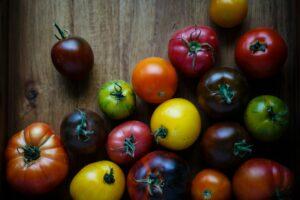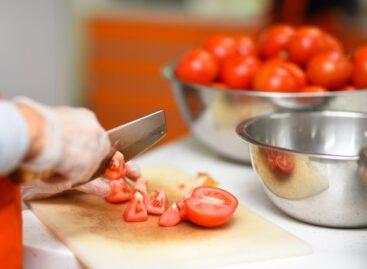The snack tomato segment is also changing
Moroccan tomatoes are becoming an increasingly dominant player in the global market, especially in the snack tomato segment. In the meantime, however, producers have to contend with water shortages, plant diseases and rising input costs.
 In the 2023/2024 season, Moroccan tomato exports reached 690,000 tonnes, a 19% increase compared to the previous year, said Fatiha Charrat, CEO of Delassus Group. 58% of the exported volume was not ball tomatoes, but typically snack-type, baby plum and cocktail tomatoes, for which demand has increased significantly, primarily in Western Europe.
In the 2023/2024 season, Moroccan tomato exports reached 690,000 tonnes, a 19% increase compared to the previous year, said Fatiha Charrat, CEO of Delassus Group. 58% of the exported volume was not ball tomatoes, but typically snack-type, baby plum and cocktail tomatoes, for which demand has increased significantly, primarily in Western Europe.
United Kingdom: snack tomato superpower
The British market is a particularly important player: in 2024, the United Kingdom imported 122.7 thousand tonnes of Moroccan tomatoes, of which 68% were snack tomatoes – more than 30% of all British tomato imports. 18% of all Moroccan exports go to this market, which clearly shows the importance of the trade relationship between the two countries.
Direct transport: from Morocco to Germany
Instead of the logistics chains traditionally carried out via France, direct transport is increasingly taking precedence. By 2024, direct exports to Germany increased to 98.4 thousand tonnes from 69.8 thousand tonnes the previous year. The product range here is also changing: 68% of deliveries are made up of baby plum tomatoes, which are preferred by customers for their taste, presentation and quality.
Not just cheap anymore – quality and predictable
“The reputation of Moroccan tomatoes has improved significantly in recent years – they are now sought after not only for their low price, but also for their excellent quality and high level of service,” stressed Charrat. During cultivation, producers are increasingly focusing on ensuring year-round, packaged shipments, especially for stable markets such as the United Kingdom, Germany and Northern Europe.
ToBRFV: a virus that forces new varieties
Despite the positive trends, the sector is also facing serious challenges. One of the most serious of these is the ToBRFV virus, which caused the loss of 15-20% of the entire crop in the 2023-2024 season. In response, producers are switching to resistant varieties, and classic types such as Angelle are gradually being pushed into the background.
Labor and wages: a new standard is emerging
Producers have also taken steps to retain workers. Under a new agreement, the minimum agricultural wage (SMAG) will be increased by 10% by 2026, with the first step coming into effect in April 2025. And larger producers – such as Duroc – are offering extra benefits: bonuses, free transport, meals, healthcare and educational support for children.
Related news
Tomatoes that stay fresh for two months? Indian innovation could open a new chapter for smallholder farmers
🎧 Hallgasd a cikket: Lejátszás Szünet Folytatás Leállítás Nyelv: Auto…
Read more >Tomato prices have increased
🎧 Hallgasd a cikket: Lejátszás Szünet Folytatás Leállítás Nyelv: Auto…
Read more >Tomatoes, the versatile ingredient – preserve them safely with the recommendation of Nébih
🎧 Hallgasd a cikket: Lejátszás Szünet Folytatás Leállítás Nyelv: Auto…
Read more >Related news
How do young adults celebrate?
🎧 Hallgasd a cikket: Lejátszás Szünet Folytatás Leállítás Nyelv: Auto…
Read more >Vajda-Papír celebrates Ooops!’s 15th anniversary with a hybrid AI campaign
🎧 Hallgasd a cikket: Lejátszás Szünet Folytatás Leállítás Nyelv: Auto…
Read more >Pre-holiday shopping at up to half price
🎧 Hallgasd a cikket: Lejátszás Szünet Folytatás Leállítás Nyelv: Auto…
Read more >





